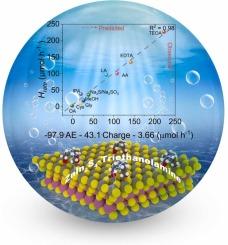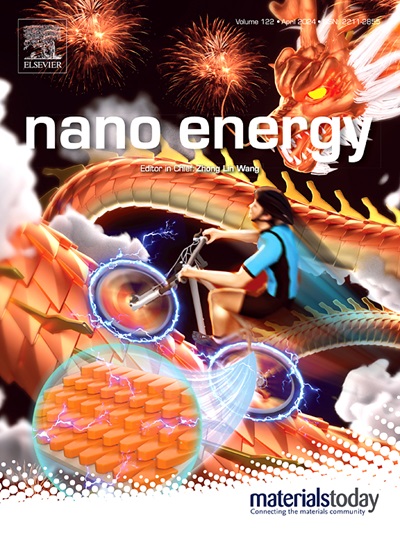The critical role of coordination interaction between hole scavenger and ZnIn2S4 for photocatalytic hydrogen evolution
IF 16.8
1区 材料科学
Q1 CHEMISTRY, PHYSICAL
引用次数: 0
Abstract
Hole scavenger plays a crucial role in the photocatalytic hydrogen evolution reaction (HER), yet the principle guiding its selection remains controversial. In our study, we evaluate the photocatalytic HER performance of ZnIn2S4 (ZIS) with ten commonly used hole scavengers, and surprisingly find that the HER efficiency is dependent on the coordination interaction between the hole scavenger and the photocatalyst, rather than the commonly recognized redox potential of the scavengers. This coordination interaction can be quantitatively interpreted using the adsorption energy (AE) as a key metric. Notably, a scaling relationship is established between the calculated AE and the experimentally observed photocatalytic H2 evolution rate (Hrate). Among the ten investigated hole scavengers, triethanolamine demonstrates the strongest coordination interaction with ZIS, leading to the highest photocatalytic Hrate of 226.67 μmol h–1. As such, this work offers a valuable guideline for the rational selection of hole scavengers in a given photocatalytic system.

求助全文
约1分钟内获得全文
求助全文
来源期刊

Nano Energy
CHEMISTRY, PHYSICAL-NANOSCIENCE & NANOTECHNOLOGY
CiteScore
30.30
自引率
7.40%
发文量
1207
审稿时长
23 days
期刊介绍:
Nano Energy is a multidisciplinary, rapid-publication forum of original peer-reviewed contributions on the science and engineering of nanomaterials and nanodevices used in all forms of energy harvesting, conversion, storage, utilization and policy. Through its mixture of articles, reviews, communications, research news, and information on key developments, Nano Energy provides a comprehensive coverage of this exciting and dynamic field which joins nanoscience and nanotechnology with energy science. The journal is relevant to all those who are interested in nanomaterials solutions to the energy problem.
Nano Energy publishes original experimental and theoretical research on all aspects of energy-related research which utilizes nanomaterials and nanotechnology. Manuscripts of four types are considered: review articles which inform readers of the latest research and advances in energy science; rapid communications which feature exciting research breakthroughs in the field; full-length articles which report comprehensive research developments; and news and opinions which comment on topical issues or express views on the developments in related fields.
 求助内容:
求助内容: 应助结果提醒方式:
应助结果提醒方式:


